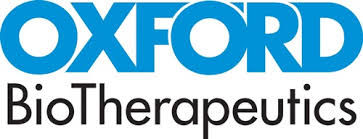预约演示
更新于:2025-05-07
CD205
更新于:2025-05-07
基本信息
别名 C-type lectin domain family 13 member B、CD205、CLEC13B + [5] |
简介 Acts as an endocytic receptor to direct captured antigens from the extracellular space to a specialized antigen-processing compartment (By similarity). Causes reduced proliferation of B-lymphocytes. |
关联
3
项与 CD205 相关的药物作用机制 CD205抑制剂 [+1] |
最高研发阶段临床1期 |
首次获批国家/地区- |
首次获批日期1800-01-20 |
靶点 |
作用机制 CD205抑制剂 |
在研机构 |
原研机构 |
在研适应症- |
非在研适应症- |
最高研发阶段临床前 |
首次获批国家/地区- |
首次获批日期1800-01-20 |
3
项与 CD205 相关的临床试验NCT05930951
A Phase Ib Study of OBT076 or OBT076 Followed by Balstilimab in Patients with Recurrent or Metastatic (R/M) Adenoid Cystic Carcinoma (AdCC) of the Head and Neck (H&N)
Adenoid cystic carcinoma (AdCC) is a rare salivary gland malignant tumor that accounts for approximately 1-3% of all head and neck cancers. AdCC is often charaterised by a long natural history with a propensity for indolent but relentless growth and dissemination. Local recurrences and late distant metastases are common findings in about 35% of the patients and associated with a poor prognosis1. AdCC is among the most lethal salivary gland tumors2 with no proven therapy for metastatic disease. Little is known about endogenous immune response directed against AdCC. However, in a relatively large series of 28 AdCC tumor, the immune profiling has shown in most tumors high and frequent programmed death ligand 2 (PD-L2) expression and PD-L1 was generally not expressed on tumor and infiltrating cells3.
The Antibody Drug Conjugates (ADCs) are emerging as a novel therapeutic option in cancer treatment that looks promising for solid tumors. An experimental CD205/Ly75-directed ADC, OBT076 induce potent cytotoxic and antitumor activity. Recently, the combination of immunohistochemistry (IHC) and tissue micro array (TMA) was performed in a series of 46 AdCC, showing a unique profile with both frequent and high expression of CD205/Ly75, much higher than for other solid tumors. In a phase I study, OBT076 demonstrated promising results for 3 patients with 2 partial responses and 1 complete response for a gastric cancer4. In this last patient, analysis showed an increase in PD1+, CD4+ and CD8+ cells suggesting that OBT076 activates the patient's immune response against the tumor, especially PD-1 targeted therapies4.
Based on this rational and on the high level of expression of CD205/Ly75 in AdCC, the hypothesis tested in this study is that OBT076 could be a potential effective treatment for R/M AdCC, which is an orphan lethal disease. The efficacy of OBT076 will be tested either alone or followed by an anti PD-1 inhibitor (Balstilimab) with the hypothesis that OBT076 will induce immune infiltrate that could restore sentivity to PD-1 targeting.
The Antibody Drug Conjugates (ADCs) are emerging as a novel therapeutic option in cancer treatment that looks promising for solid tumors. An experimental CD205/Ly75-directed ADC, OBT076 induce potent cytotoxic and antitumor activity. Recently, the combination of immunohistochemistry (IHC) and tissue micro array (TMA) was performed in a series of 46 AdCC, showing a unique profile with both frequent and high expression of CD205/Ly75, much higher than for other solid tumors. In a phase I study, OBT076 demonstrated promising results for 3 patients with 2 partial responses and 1 complete response for a gastric cancer4. In this last patient, analysis showed an increase in PD1+, CD4+ and CD8+ cells suggesting that OBT076 activates the patient's immune response against the tumor, especially PD-1 targeted therapies4.
Based on this rational and on the high level of expression of CD205/Ly75 in AdCC, the hypothesis tested in this study is that OBT076 could be a potential effective treatment for R/M AdCC, which is an orphan lethal disease. The efficacy of OBT076 will be tested either alone or followed by an anti PD-1 inhibitor (Balstilimab) with the hypothesis that OBT076 will induce immune infiltrate that could restore sentivity to PD-1 targeting.
开始日期2023-11-29 |
申办/合作机构- |
NCT04064359
A Phase I, Open-label, Dose Finding Study to Assess the Safety, Tolerability, PK, and Preliminary Efficacy of OBT076, a CD205-directed ADC, in Recurrent and/or Metastatic CD205+ Solid Tumors
The purpose of this study is to evaluate OBT076, which is a drug that combines an antibody with an anti-cancer drug. This class of drugs are called Antibody-Drug Conjugates (ADC). Antibodies are normally produced in the human body by the immune system to fight infections but can be designed to target cancer cells and deliver an anti-cancer drug. OBT076 is composed of an antibody that targets the CD205 protein on cancer cells and delivers an anti-cancer drug which can kill them. OBT076 is an "Investigational Drug", which means that it is still being studied and has not yet been approved by the US Food and Drug Administration (FDA), the European Medicines Agency (EMA) or any other regulatory authorities to be prescribed by doctors for the treatment of metastatic or recurrent solid tumors. The use of OBT076 in this study is investigational.
This is a Phase I research study designed to look at several dose levels of the study drug to find the highest dose level that is safe and well-tolerated (does not cause unacceptable side effects), and to examine the effects of the study drug in a small group of research participants. The study will also look at the effectiveness of OBT076 as an anti-cancer therapy. Once the optimal dose is determined and safety is assessed, additional research participants will be treated at the optimal dose level to further evaluate safety and effectiveness.
This is a Phase I research study designed to look at several dose levels of the study drug to find the highest dose level that is safe and well-tolerated (does not cause unacceptable side effects), and to examine the effects of the study drug in a small group of research participants. The study will also look at the effectiveness of OBT076 as an anti-cancer therapy. Once the optimal dose is determined and safety is assessed, additional research participants will be treated at the optimal dose level to further evaluate safety and effectiveness.
开始日期2019-07-25 |
申办/合作机构 |
NCT03403725
Open-Label, Multicenter, Phase I Dose Escalation Study of MEN1309, a CD205 Antibody-Drug Conjugate,in Patients With CD205-Positive Metastatic Solid Tumors and Non-Hodgkin Lymphoma
The purpose of this clinical trial is to identify the highest dose of MEN1309 drug with acceptable safety profile and that can be used in patients affected by CD205-positive solid tumors and Non-Hodgkin Lymphoma
开始日期2017-08-28 |
100 项与 CD205 相关的临床结果
登录后查看更多信息
100 项与 CD205 相关的转化医学
登录后查看更多信息
0 项与 CD205 相关的专利(医药)
登录后查看更多信息
678
项与 CD205 相关的文献(医药)2025-05-01·International Journal of Biological Macromolecules
Corrigendum to “DEC-205 receptor targeted poly(lactic-co-glycolic acid) nanoparticles containing Eucommia ulmoides polysaccharide enhances the immune response of foot-and-mouth disease vaccine in mice” [International Journal of Biological Macromolecules, 227 (2023) 576–589]
作者: Li, Hangyu ; Feng, Yangyang ; Wu, Daiyan ; Liu, Ziwei ; Zhang, Xinnan ; Zhang, Linzi ; Li, Sheng ; Tang, Feng ; Fan, Jing ; Feng, Haibo ; Liu, Qianqian
2025-04-15·The Journal of Infectious Diseases
Antibody-Based Antigen Delivery to Dendritic Cells as a Vaccination Strategy Against Ebola Virus Disease
Article
作者: Heung, Michelle ; Bodmer, Bianca S ; Idoyaga, Juliana ; Blake, Olivia ; Escudero-Pérez, Beatriz ; Anjuère, Fabienne ; Baz-Martínez, Maite ; Hoenen, Thomas ; Nelson, Emily V ; Gallais, Yann ; Oestereich, Lisa ; Adam, Elisa ; Rottstegge, Monika ; Olal, Catherine ; Port, Julia R ; Wurr, Stephanie ; Bencsik, András ; Muñoz-Fontela, César ; Malliere, Bernard ; Müller-Guhl, Jürgen
2024-12-20·Open Medicine
Identification of signatures associated with microsatellite instability and immune characteristics to predict the prognostic risk of colon cancer
Article
作者: Wang, Yongwei ; Gao, Yaxian ; You, Yong ; Zhang, Yan ; Jiang, Tao ; Bai, Bing ; Bo, Sihan
33
项与 CD205 相关的新闻(医药)2025-04-16
·抗体圈
近日,Nature Biomedical Engineering期刊发表了一篇名为《Site-directed multivalent conjugation of antibodies to ubiquitinated payloads》的研究论文,主要介绍了一种名为“ubi-tagging”的新型模块化技术,用于通过小蛋白泛素(ubiquitin)实现抗体的定向多价偶联。文章标题抗体偶联物在诊断和治疗应用中具有重要作用,但传统偶联技术常因缺乏对修饰数量和位点的精确控制而导致产品异质性,可能影响抗体功能和药代动力学。该技术能够高效地将抗体、抗体片段、纳米抗体、肽或小分子(如荧光染料)与泛素融合,并在30分钟内完成偶联反应。研究展示了这种技术在生成双特异性T细胞接合剂(BiTE)和靶向树突状细胞的抗原偶联物方面的应用,并证明了其在诱导T细胞反应方面的有效性。主要内容1. 荧光标记的Fab片段:ubi-tagging技术成功实现了Fab片段的荧光标记,且标记后的Fab片段在热稳定性和抗原结合能力上与未标记的Fab片段相当。图1|泛素标记抗体片段的生成及位点特异性标记2. 多价抗体格式:通过ubi-tagging技术,研究者能够快速生成高达11聚体的多价Fab片段,并且展示了通过控制反应条件实现二价和三价Fab片段的合成。图2|使用泛素标记生成多聚体抗体格式及双价和三价Fab片段偶联物3. 双特异性T细胞接合剂(BiTE):研究者利用ubi-tagging技术开发了四价双特异性抗体复合物,用于T细胞激活和细胞毒性实验。实验结果表明,这种BiTE能够有效地激活T细胞,并在体外实验中显示出对靶细胞的杀伤活性。图3|泛素标记单克隆抗体的偶联及用于T细胞激活的双特异性四价抗体复合物的生成流式细胞术分析显示,泛素标记的TRP1/mCD3 BiTE以剂量依赖性方式激活T细胞,表现为T细胞上Ki67、颗粒酶B、CD69和4-1BB(CD137)表达增加,但仅在与KPC3-TRP1细胞共培养时出现,而与KPC3-WT细胞共培养时则未观察到。在乳酸脱氢酶(LDH)释放实验中,表达TRP1的KPC3细胞显示出泛素标记的TRP1/mCD3 BiTE剂量依赖性的细胞杀伤活性。这些结果共同证明了泛素标记方法的灵活性和高效性,以及泛素标记的四价双特异性抗体复合物的功能性。4. 树突状细胞靶向抗原递送:ubi-tagging技术被用于将抗原肽与靶向树突状细胞的Fab片段偶联。实验表明,与sortagging技术相比,ubi-tagging技术在体内实验中显示出更强的T细胞激活能力,且在细胞摄取实验中表现出更高的靶向性。图4|Fab-Ub2-OVAp偶联物在体外诱导强烈的T细胞反应在Fab-Ub2-OVAp条件下,无论是否存在FR基序,OT-I细胞上激活标记物CD25、4-1BB和CD44的表达水平都很高,并且细胞分泌促炎细胞因子干扰素γ(IFNγ)和白细胞介素-2(IL-2)。对于sortagging标记的偶联物,FR基序对于T细胞激活至关重要,这与早期的研究结果一致。激活标记物的表达水平和细胞因子的分泌表明,与sortagging标记的Fab-Srt-OVAp偶联物相比,Fab-Ub2-OVAp偶联物在体外诱导的T细胞激活更为强烈,无论是否存在FR基序。受这些结果的鼓舞,作者接下来评估了Fab-Ub2-OVAp和Fab-Srt-FR-OVAp偶联物在体内诱导OT-I细胞激活的能力。图5|Fab-Ub2-OVAp偶联物在体内诱导强烈的T细胞反应作者观察到,接受泛素标记偶联物治疗的小鼠表现出强烈的OT-I细胞增殖,而sortagging标记的偶联物在本实验所用剂量下仅诱导了最小程度的OT-I细胞增殖。与给予未偶联的Fab-Ub和Ub-OVAp的条件相比,泛素标记的偶联物也诱导了更强的增殖。这表明了泛素标记靶向部分的优势,以及Fab-Ub2偶联物在体内的稳定性。生物分布数据表明,泛素标记的偶联物(分子量约66 kDa)主要通过肝脏清除,而sortagging标记的偶联物(分子量约52 kDa)则通过肾脏清除。尽管这些偶联物都配备了相同的DEC205靶向Fab'片段,但与sortagging标记的偶联物相比,泛素标记的偶联物被CD11c+“树突状细胞”群体更特异性地摄取。后者则被CD11c−/CD11b+群体以更高的程度摄取。这些数据表明泛素标记的DC靶向疫苗在体内对靶细胞的结合更为优越,这有助于解释这两种偶联物在脾脏中诱导抗原特异性CD8+T细胞激活的能力差异。为了进一步探索泛素标记(ubi-tagging)在树突状细胞(DC)靶向抗原递送中的适用性,作者将研究范围扩展到纳米抗体(VHHs)偶联物。图6|使用泛素标记纳米抗体进行树突状细胞靶向抗原递送结果显示,对DC-SIGN的Rho-Ub2-VHH偶联物的荧光信号显著增强,且呈DC-SIGN表达和剂量依赖性。相比之下,Rho-Ub2-ntVHH未观察到这种增强。所有测试的泛素-肽融合物均能轻松合成,并与VHH-Ub(K48R)don偶联,且未出现溶解性问题。在用抗DC-SIGN VHH-Ub2-gp100p脉冲处理的moDCs条件下,与非靶向偶联物相比,T细胞的增殖、激活和细胞因子分泌表现出更强的剂量依赖性增加。综上所述,结果表明泛素标记在纳米抗体上是可行的,并证明了泛素标记的纳米抗体-肽表位偶联物作为人类树突状细胞靶向疫苗载体具有进一步研究的价值。基础实验小课堂问:为什么要进行竞争性结合实验?答:为了验证双价抗体格式的功能性,并评估其与单价Fab-Ub相比的亲和力增强效应。那么要如何测试呢?让我们一起来看一下吧实验流程竞争性结合实验:以mCD3为靶点的ubi-tagged抗体片段和偶联物1. 每孔加入50,000个EL4细胞(该细胞表达CD3);2. 将Fab-Ub、Fab-Ub2-Fab或未标记的亲本抗体进行稀释,浓度范围均为0.01到1,000 nM;3. 加入50 µL的mCD3单抗;4. 4°C下孵育15分钟;5. 用含有5%FCS的PBS洗涤细胞;6. 再加入50 µL浓度为1 µg/mL的FITC标记的mCD3单抗;7. 在4°C下孵育30分钟;8. 细胞经过两次洗涤后,使用流式细胞仪测量荧光强度。结果解读:与亲本抗体相比,Fab-Ub的亲和力有所下降,但在泛素标记后部分恢复,且Fab2-Ub2显示出比单价Fab-Ub更低的半数抑制浓度(IC50),这可能是由于双价格式的亲和力增加所致。实验中用到的主要试剂:ThermoScientific,MA1-80783产品相关链接:https://www.thermofisher.cn/order/genome-database/dataSheetPdf?producttype=antibody&productsubtype=antibody_primary&productId=MA1-80783&version=LocalThermoScientific,MA1-80640产品相关链接:https://www.thermofisher.cn/order/genome-database/dataSheetPdf?producttype=antibody&productsubtype=antibody_primary&productId=MA1-80640&version=Local关键结论ubi-tagging技术的优势:该技术能够在短时间内高效生成均质的多价抗体偶联物,具有高度的位点特异性和反应效率。功能验证:ubi-tagging技术生成的抗体偶联物在体外和体内实验中均显示出良好的功能,特别是在树突状细胞靶向抗原递送和T细胞激活方面。与sortagging技术的比较:ubi-tagging技术在体内实验中显示出比sortagging技术更好的T细胞激活效果和靶向性,表明其在疫苗开发和治疗性抗体设计中具有潜在优势。研究意义这项研究提供了一种新的抗体偶联技术,可能对开发新型诊断工具和治疗性抗体药物具有重要意义,尤其是在提高抗体药物的靶向性和治疗效果方面。基础知识点供给站:泛素(Ub)是一种76个氨基酸的小蛋白,通过泛素化过程共价连接到目标蛋白上。泛素化由E1(激活酶)、E2(结合酶)和E3(连接酶)组成的酶级联反应调控,最终将泛素的C末端甘氨酸残基共价连接到靶蛋白的N末端或赖氨酸残基上。泛素分子也可以通过七个内部赖氨酸残基之一或N末端甲硫氨酸残基相互连接,从而形成具有不同连接类型的多泛素链。EL4细胞是一种从小鼠淋巴瘤组织中建立的细胞系,被广泛用于研究肿瘤免疫学、抗肿瘤药物筛选、疫苗研发等领域。EL4细胞系的生长特性是悬浮生长,即细胞在培养液中自由漂浮。这种细胞系的形态学表现为淋巴瘤细胞样,具有圆形或椭圆形细胞核和胞质。识别微信二维码,添加抗体圈小编,符合条件者即可加入抗体圈微信群!请注明:姓名+研究方向!本公众号所有转载文章系出于传递更多信息之目的,且明确注明来源和作者,不希望被转载的媒体或个人可与我们联系(cbplib@163.com),我们将立即进行删除处理。所有文章仅代表作者观点,不代表本站立场。
2025-04-16
·医药速览
近日,Nature Biomedical Engineering期刊发表了一篇名为《Site-directed multivalent conjugation of antibodies to ubiquitinated payloads》的研究论文,主要介绍了一种名为“ubi-tagging”的新型模块化技术,用于通过小蛋白泛素(ubiquitin)实现抗体的定向多价偶联。文章标题抗体偶联物在诊断和治疗应用中具有重要作用,但传统偶联技术常因缺乏对修饰数量和位点的精确控制而导致产品异质性,可能影响抗体功能和药代动力学。该技术能够高效地将抗体、抗体片段、纳米抗体、肽或小分子(如荧光染料)与泛素融合,并在30分钟内完成偶联反应。研究展示了这种技术在生成双特异性T细胞接合剂(BiTE)和靶向树突状细胞的抗原偶联物方面的应用,并证明了其在诱导T细胞反应方面的有效性。主要内容1. 荧光标记的Fab片段:ubi-tagging技术成功实现了Fab片段的荧光标记,且标记后的Fab片段在热稳定性和抗原结合能力上与未标记的Fab片段相当。图1|泛素标记抗体片段的生成及位点特异性标记2. 多价抗体格式:通过ubi-tagging技术,研究者能够快速生成高达11聚体的多价Fab片段,并且展示了通过控制反应条件实现二价和三价Fab片段的合成。图2|使用泛素标记生成多聚体抗体格式及双价和三价Fab片段偶联物3. 双特异性T细胞接合剂(BiTE):研究者利用ubi-tagging技术开发了四价双特异性抗体复合物,用于T细胞激活和细胞毒性实验。实验结果表明,这种BiTE能够有效地激活T细胞,并在体外实验中显示出对靶细胞的杀伤活性。图3|泛素标记单克隆抗体的偶联及用于T细胞激活的双特异性四价抗体复合物的生成流式细胞术分析显示,泛素标记的TRP1/mCD3 BiTE以剂量依赖性方式激活T细胞,表现为T细胞上Ki67、颗粒酶B、CD69和4-1BB(CD137)表达增加,但仅在与KPC3-TRP1细胞共培养时出现,而与KPC3-WT细胞共培养时则未观察到。在乳酸脱氢酶(LDH)释放实验中,表达TRP1的KPC3细胞显示出泛素标记的TRP1/mCD3 BiTE剂量依赖性的细胞杀伤活性。这些结果共同证明了泛素标记方法的灵活性和高效性,以及泛素标记的四价双特异性抗体复合物的功能性。4. 树突状细胞靶向抗原递送:ubi-tagging技术被用于将抗原肽与靶向树突状细胞的Fab片段偶联。实验表明,与sortagging技术相比,ubi-tagging技术在体内实验中显示出更强的T细胞激活能力,且在细胞摄取实验中表现出更高的靶向性。图4|Fab-Ub2-OVAp偶联物在体外诱导强烈的T细胞反应在Fab-Ub2-OVAp条件下,无论是否存在FR基序,OT-I细胞上激活标记物CD25、4-1BB和CD44的表达水平都很高,并且细胞分泌促炎细胞因子干扰素γ(IFNγ)和白细胞介素-2(IL-2)。对于sortagging标记的偶联物,FR基序对于T细胞激活至关重要,这与早期的研究结果一致。激活标记物的表达水平和细胞因子的分泌表明,与sortagging标记的Fab-Srt-OVAp偶联物相比,Fab-Ub2-OVAp偶联物在体外诱导的T细胞激活更为强烈,无论是否存在FR基序。受这些结果的鼓舞,作者接下来评估了Fab-Ub2-OVAp和Fab-Srt-FR-OVAp偶联物在体内诱导OT-I细胞激活的能力。图5|Fab-Ub2-OVAp偶联物在体内诱导强烈的T细胞反应作者观察到,接受泛素标记偶联物治疗的小鼠表现出强烈的OT-I细胞增殖,而sortagging标记的偶联物在本实验所用剂量下仅诱导了最小程度的OT-I细胞增殖。与给予未偶联的Fab-Ub和Ub-OVAp的条件相比,泛素标记的偶联物也诱导了更强的增殖。这表明了泛素标记靶向部分的优势,以及Fab-Ub2偶联物在体内的稳定性。生物分布数据表明,泛素标记的偶联物(分子量约66 kDa)主要通过肝脏清除,而sortagging标记的偶联物(分子量约52 kDa)则通过肾脏清除。尽管这些偶联物都配备了相同的DEC205靶向Fab'片段,但与sortagging标记的偶联物相比,泛素标记的偶联物被CD11c+“树突状细胞”群体更特异性地摄取。后者则被CD11c−/CD11b+群体以更高的程度摄取。这些数据表明泛素标记的DC靶向疫苗在体内对靶细胞的结合更为优越,这有助于解释这两种偶联物在脾脏中诱导抗原特异性CD8+T细胞激活的能力差异。为了进一步探索泛素标记(ubi-tagging)在树突状细胞(DC)靶向抗原递送中的适用性,作者将研究范围扩展到纳米抗体(VHHs)偶联物。图6|使用泛素标记纳米抗体进行树突状细胞靶向抗原递送结果显示,对DC-SIGN的Rho-Ub2-VHH偶联物的荧光信号显著增强,且呈DC-SIGN表达和剂量依赖性。相比之下,Rho-Ub2-ntVHH未观察到这种增强。所有测试的泛素-肽融合物均能轻松合成,并与VHH-Ub(K48R)don偶联,且未出现溶解性问题。在用抗DC-SIGN VHH-Ub2-gp100p脉冲处理的moDCs条件下,与非靶向偶联物相比,T细胞的增殖、激活和细胞因子分泌表现出更强的剂量依赖性增加。综上所述,结果表明泛素标记在纳米抗体上是可行的,并证明了泛素标记的纳米抗体-肽表位偶联物作为人类树突状细胞靶向疫苗载体具有进一步研究的价值。基础实验小课堂问:为什么要进行竞争性结合实验?答:为了验证双价抗体格式的功能性,并评估其与单价Fab-Ub相比的亲和力增强效应。那么要如何测试呢?让我们一起来看一下吧实验流程竞争性结合实验:以mCD3为靶点的ubi-tagged抗体片段和偶联物1. 每孔加入50,000个EL4细胞(该细胞表达CD3);2. 将Fab-Ub、Fab-Ub2-Fab或未标记的亲本抗体进行稀释,浓度范围均为0.01到1,000 nM;3. 加入50 µL的mCD3单抗;4. 4°C下孵育15分钟;5. 用含有5%FCS的PBS洗涤细胞;6. 再加入50 µL浓度为1 µg/mL的FITC标记的mCD3单抗;7. 在4°C下孵育30分钟;8. 细胞经过两次洗涤后,使用流式细胞仪测量荧光强度。结果解读:与亲本抗体相比,Fab-Ub的亲和力有所下降,但在泛素标记后部分恢复,且Fab2-Ub2显示出比单价Fab-Ub更低的半数抑制浓度(IC50),这可能是由于双价格式的亲和力增加所致。实验中用到的主要试剂:ThermoScientific,MA1-80783产品相关链接:https://www.thermofisher.cn/order/genome-database/dataSheetPdf?producttype=antibody&productsubtype=antibody_primary&productId=MA1-80783&version=LocalThermoScientific,MA1-80640产品相关链接:https://www.thermofisher.cn/order/genome-database/dataSheetPdf?producttype=antibody&productsubtype=antibody_primary&productId=MA1-80640&version=Local关键结论ubi-tagging技术的优势:该技术能够在短时间内高效生成均质的多价抗体偶联物,具有高度的位点特异性和反应效率。功能验证:ubi-tagging技术生成的抗体偶联物在体外和体内实验中均显示出良好的功能,特别是在树突状细胞靶向抗原递送和T细胞激活方面。与sortagging技术的比较:ubi-tagging技术在体内实验中显示出比sortagging技术更好的T细胞激活效果和靶向性,表明其在疫苗开发和治疗性抗体设计中具有潜在优势。研究意义这项研究提供了一种新的抗体偶联技术,可能对开发新型诊断工具和治疗性抗体药物具有重要意义,尤其是在提高抗体药物的靶向性和治疗效果方面。基础知识点供给站:泛素(Ub)是一种76个氨基酸的小蛋白,通过泛素化过程共价连接到目标蛋白上。泛素化由E1(激活酶)、E2(结合酶)和E3(连接酶)组成的酶级联反应调控,最终将泛素的C末端甘氨酸残基共价连接到靶蛋白的N末端或赖氨酸残基上。泛素分子也可以通过七个内部赖氨酸残基之一或N末端甲硫氨酸残基相互连接,从而形成具有不同连接类型的多泛素链。EL4细胞是一种从小鼠淋巴瘤组织中建立的细胞系,被广泛用于研究肿瘤免疫学、抗肿瘤药物筛选、疫苗研发等领域。EL4细胞系的生长特性是悬浮生长,即细胞在培养液中自由漂浮。这种细胞系的形态学表现为淋巴瘤细胞样,具有圆形或椭圆形细胞核和胞质推文用于传递知识,如因版权等有疑问,请于本文刊发30日内联系医药速览。原创内容未经授权,禁止转载至其他平台。有问题可发邮件至yong_wang@pku.edu.cn获取更多信息。©2021 医药速览 保留所有权利往期链接“小小疫苗”养成记 | 医药公司管线盘点 人人学懂免疫学| 人人学懂免疫学(语音版) 综述文章解读 | 文献略读 | 医学科普|医药前沿笔记PROTAC技术| 抗体药物| 抗体药物偶联-ADC核酸疫苗 | CAR技术| 化学生物学温馨提示医药速览公众号目前已经有近12个交流群(好学,有趣且奔波于医药圈人才聚集于此)。进群请扫描下方二维码,备注“姓名/昵称-企业/高校-具体研究领域/专业”,此群仅为科研交流群,非诚勿扰。简单操作即可星标⭐️医药速览,第一时间收到我们的推送①点击标题下方“医药速览” ②至右上角“...” ③点击“设为星标
2025-04-10
注:本奖项申报将于2025年4月30日截止抗体在研究、诊断和治疗领域具有重要价值。然而,传统抗体偶联技术存在一些缺陷,如产物异质性高、修饰数量和位置难以控制,这可能影响抗体功能和药代动力学。4月9日Nature Biomedical Engineering(IF=26.8)杂志上线的一篇论文中,研究人员开发了一种全新的定点多价偶联技术——ubi-tagging技术。ubi-tagging技术利用泛素化酶,将多个泛素融合蛋白(抗体、抗体片段、纳米抗体、肽或小分子)与抗体和纳米抗体偶联。与传统技术相比,该技术具有快速、高效的优点,能够在30分钟内完成偶联,并可实现93%~96%的转化效率。图1. ubi-tagging技术原理ubi-tagging技术的主要决定因素在于:泛素化酶:针对预想的赖氨酸连接类型(如K48)的泛素化酶。泛素供体(Ubdon):具有自由C末端甘氨酸,特定赖氨酸突变为精氨酸(如K48R),防止自聚合。泛素受体(Ubacc):携带特定赖氨酸(如K48),C末端缺失甘氨酸二肽(ΔGG)或被封闭。研究人员成功将荧光染料通过ubi-tagging技术连接到Fab’片段上,生成了单荧光标记的Fab’片段。质谱分析确认了产物的形成,且偶联效率高达93%~96%。此外,通过ubi-tagging技术,研究人员能够将多个Fab’片段连接起来,形成高达11聚体的多价抗体。接下来,研究人员探究了ubi-tagging技术在以下三个领域中的应用:1)双特异性T细胞偶联剂:研究人员利用ubi-tagging技术,将抗TRP1抗体和抗mCD3抗体偶联,生成双特异性T细胞偶联剂(TRP1/mCD3 BiTE)。体外实验显示,该偶联剂可有效激活T细胞并杀伤TRP1阳性肿瘤细胞。图2. TRP1/mCD3 BiTE能够更有效地激活T细胞并杀死肿瘤细胞2)DC细胞靶向抗原递呈:研究人员利用ubi-tagging技术,将抗DEC205抗体和抗原肽偶联,生成DC细胞靶向抗原递呈剂(Fab-Ub2-OVAp)。结果显示,该偶联物能显著增强树突细胞(DC)的抗原呈递能力,诱导T细胞活化。与sortagging(一种成熟的位点特异性偶联技术)相比,ubi-tagging偶联的抗原在体内外均表现出更强的免疫原性,且无需依赖FR基序。图3. Fab-Ub2-OVAp偶联物在体内引发有效的T细胞反应3)纳米抗体偶联:研究人员利用ubi-tagging,将疏水肽连接至VHH(纳米抗体),显著提升了其水溶性,并可有效激活抗原特异性T细胞。图4. 使用ubi-tagging的纳米抗体进行DC靶向抗原递送上述三个应用案例展示了ubi-tagging技术在生成各种类型抗体偶联物方面的潜力,并通过实验结果证明了其有效性。总结来说,ubi-tagging是一种快速、高效、模块化的蛋白质偶联技术,可用于生成各种形式的抗体偶联物。该技术具有广泛的应用潜力,有望改进和开发蛋白质偶联物,特别是用于临床研究和诊断治疗的抗体偶联物。参考资料:[1]Angela F. el Hebieshy et al. Site-directed multivalent conjugation of antibodies to ubiquitinated payloads. Nature Biomedical Engineering(2025)https://www-nature-com.libproxy1.nus.edu.sg/articles/s41551-024-01342-z#Sec6[2]https://www-nature-com.libproxy1.nus.edu.sg/articles/s41551-025-01368-x#Sec3推荐阅读2024年,十大制药巨头看上的AI制药公司专访晶核余海华 | 核药赛道“十二问”医药魔方Pro洞察全球生物医药前沿趋势赋能中国源头创新成果转化媒体合作:15895423126Copyright © 2025 PHARMCUBE. All Rights Reserved.欢迎转发分享及合理引用,引用时请在显要位置标明文章来源;如需转载,请给微信公众号后台留言或发送消息,并注明公众号名称及ID。免责申明:本微信文章中的信息仅供一般参考之用,不可直接作为决策内容,医药魔方不对任何主体因使用本文内容而导致的任何损失承担责任。
分析
对领域进行一次全面的分析。
登录
或

Eureka LS:
全新生物医药AI Agent 覆盖科研全链路,让突破性发现快人一步
立即开始免费试用!
智慧芽新药情报库是智慧芽专为生命科学人士构建的基于AI的创新药情报平台,助您全方位提升您的研发与决策效率。
立即开始数据试用!
智慧芽新药库数据也通过智慧芽数据服务平台,以API或者数据包形式对外开放,助您更加充分利用智慧芽新药情报信息。
生物序列数据库
生物药研发创新
免费使用
化学结构数据库
小分子化药研发创新
免费使用

